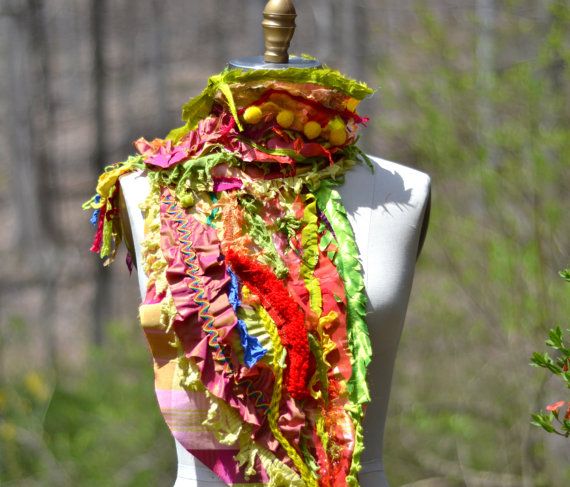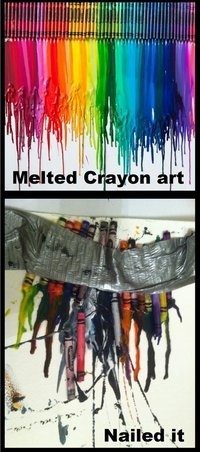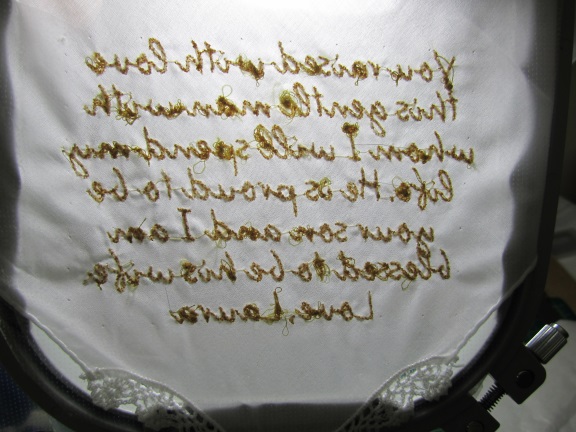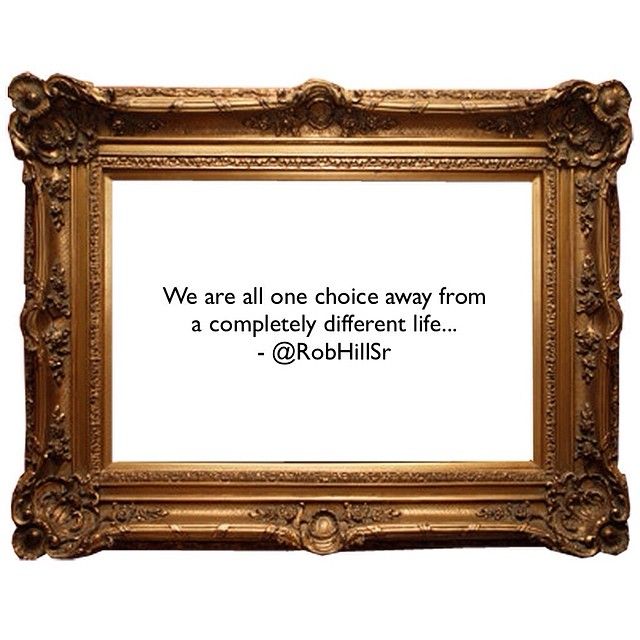These things are just a little
information for your project. I know
that, although I have been embroidering for nearly 13 years, I still get a lot
of information and recall of what I have forgotten (brain is too full!) when I
re-read a blog. Newbie or seasoned,
embroidery is fun and challenging.
Include a little tip here in the Comments section. All of us who blog love hearing from you!
If you were to read every tutorial on the Internet (gasp!) for
embroidery, there are a lot of things that you can never learn from the
written word. Just one of those things, is the 'recipe' for
the perfect project. Here is someone's idea of a perfect project -

While it is not embroidery, it is a very colorful scarf. Beauty is in the eye of the beholder and I think this is interesting.
If someone would have told me that
the perfect 'recipe' does not exist, nor most likely will YOU ever find it, I
probably would not have listened. After
all, I am such an idiot that I believe given enough time and money, everything
is possible. . . .
Additionally, when I saw those
'professionals' whipping out so many beautiful things, I thought it was an easy
craft. (Stop laughing!) Here is an example of a pro and non-pro with
the same task - it is a lot like my first embroidery projects.

Well, let's try to figure out what
we need to get a reasonably nice looking embroidery.
1.
Make sure your embroidery machine is in good working order. I personally bought
a machine on Ebay - BIG mistake. It
might have been a refurbished or otherwise not a well functioning piece of
equipment. I got a lot of noise!!! And I
got a lot of this -
a.
Not every machine is capable of
everything you want to eventually do.
Even the $15,000 machines have some sort of drawbacks.
b.
Your dealer is 'supposed' to be your
best teacher. I know that most of them
go to training classes regularly. Not
all do that.
c.
Blog reference: Machine Maintenance

2.
You want to be using a trusted
digitizer for a good design. Not
everyone who calls themselves a digitizer is, indeed, any type of competent
creator. If you are a newbie, ask in the
AnnTheGran Forum, there are many excellent digitizers and you will get opinions
based on their experiences. Here at
AnnTheGran, each of the digitizers has been carefully screened and been
digitizing for a long time. There is no
substitute for experience.
a.
Freebies are nice but the main reason
for giving them away is to demonstrate the quality. Take that seriously and try the freebie on
sample fabric.
b.
If you are doing the 'discovery sew'
(aka sew out), use a scrap from your project's actual fabric. If that is not possible, check your fabric
stash for something similar. If that
still fails, Goodwill and the like are great places to get fabric - disguised
as clothing - is an inexpensive way to sew your test.
c.
Blog reference: Design Information
3.
Which brings me to the next point,
you need to have multiple designs under your belt before you are competent
enough to be seasoned enough for further challenges. That would include items like a towel or a
fine fabric like a silk. Learning what
it takes to make something suitable for display or giving can be a long
learning curve. For some, it seems that
they can be ready in 4 or 5 designs.
Personally, I took more than 15 projects before I had something
semi-presentable. Why? Because I kept
thinking that "X" or "Y" is logical, therefore, I should be
able to this or that. I really thought I
had a handle on the concept. Try to be
honest with yourself. Just because you
can sew (I myself cannot sew) you can be a great embroiderer quickly.
a.
Some people cannot tell good
embroidery from bad. I have had that
experience many times. I work hard at
giving something that is perfect but that happens only about one in ten
times. Practice with old denim pieces, pillow cases and scrap fabric.
b.
On the other hand, we are our own
worse critics. A little error can be
acceptable. after all - even trusted
people sell their 'seconds' at a reduced price.
(Which brings me to the question, what do car manufacturers do with
their seconds??)
c.
Reference Blog: Experience
4.
Make sure you are using the correct needle
and thread. The #11 or #12 needle are
considered appropriate for 'general' embroidery. Some people feel that the #12 is all important
and would not use the #11. It is a
matter of preference.
a.
Keep in mind that there are
different needles for different situations, such as using a ball point needle
on knits. If you use a sharp needle, it
can and will damage the knit by nicking or cutting the threads. Those results will mean that eventually your
knit will 'run.'
b.
Understanding your needs for a
different needle can be challenging. If
in doubt, check in Ann's
Forum for advice and friendship.
c.
Reference Blog: Needles
5.
You stabilizer must be in accordance
with your fabric. Some 'simplified' (these are NOT the only and/or best) rules
are:
a.
Denim and heavier fabrics tend to
need less stabilizing because they are a stable fabric themselves. You still need to attach a tear-away
(perhaps) so that the fabric is stable.
b.
The lighter and loosely woven fabrics
will need more and often, unique stabilization.
I.E., I prefer to use an adhesive backed stabilizer for loosely woven
fabrics . Check for blogs giving you the 'how and especially, the why' to use
the stabilizers. Basting is a very good way to get stabilization. Whether by hand, pins or machine, adding basting does make a difference.
c.
Reference Blog: Stabilizers
Tip Time:
We all know that using Polyester for embroidery that will be getting hard use such as on a child's jeans or a sweater for keeping warm. Polyester is tough and holds up to a lot of demands. That does change the rules just a little bit for the needle. The needle was originally created for natural fabrics but the man-made fibers are a different story.
When considering how often to change your needle, remember that the strength of Polyester fabric is making your needle work harder. The thread going through the eye is also making more pressure for that eye. Step up and change your needle more often. As noted in my blog, keeping some sort of track of how long the needle is in use is very important. I always run the side of the needle across my finger and find that the needle is often on the dull side. Improve your embroidery - use fresher needles.
